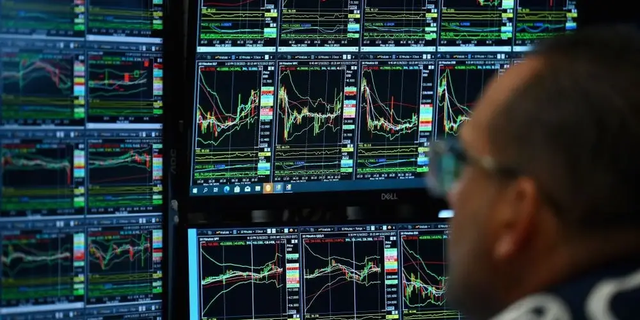
Aruni Soni
Nov. 22, 2023
Markets are betting on the fact that the Federal Reserve's rate hikes are over. If that's the case, it could mean the S&P 500 can swing up by double-digits in the next year.
That's because rate "tops" in history have typically been followed by strong gains for stocks, DataTrek analyst Jessica Rabe wrote in a note Wednesday.
"US equities tend to rally by double digits and exceed the long run average price return of 9-10 percent in the year after the Fed stops raising near-term rates," Rabe wrote. "The only exception was in the year after the Fed's last rate increase on March 15th, 2000 during the bursting of the dot com bubble."
Take a look at other recent peaks in rate hike cycles. The end of a rate hike cycle in January 1995 saw the S&P 500 jump 35.2% in the year after. A rate top in June 2006 followed a 20.7% increase in the year after that.

Angela Weiss/AFP via Getty Images
And most recently, after the rate hike cycled ended in December 2018, the benchmark index spiked 27.9% over the next year.
Put those together, and the average growth in the S&P 500 after a rate top is 17.4%.
"The S&P 500 is essentially unchanged since July 26th, the date of what markets now think of as the "last" hike of this cycle, so history suggests the index can rally by 17 percent through the first half of 2024," Rabe wrote.
The benchmark index was sitting at 4,547 Wednesday morning, up about 1% in the past 5 days. Following a cool CPI report last week, the market rallied on growing conviction that the Fed was done hiking rates. Experts like Jeremy Siegal expect the rate cuts to arrive as early as March next year.
As for what happens to stocks after the central bank cuts interest rates, Rabe wrote that returns are "mixed" in the months that follow. Going back to history, usually markets rally in the month following the cut. But looking farther out, in the year after cuts began in 2001 and 2007, the S&P500 was down by 9.6% and 17.8% respectively.
That wasn't the case in 2019 when the index was up 8.9% in the year after the rate cut in July.
That difference is largely due to unique factors like the 9/11 terror attacks in 2001 that lead to war in the Middle East or the long-lasting damage from the Financial Crisis in 2008.
"By contrast, rapid monetary and fiscal policy responses to the Pandemic Crisis helped US equities recover much quicker," Rabe wrote.
Subscribe to Business Insider's Financial Insights Newsletter
This Business Insider article was legally licensed by AdvisorStream


